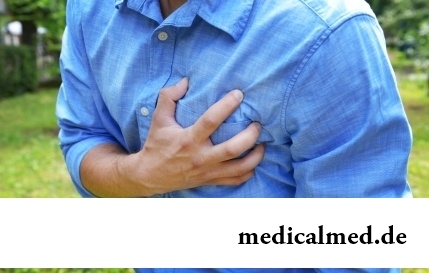





Osteochondropathy
Short characteristic of a disease
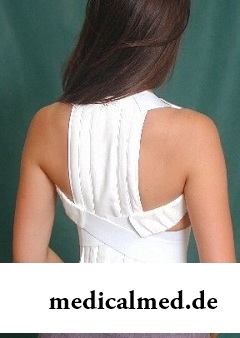 Osteochondropathy – a disease of children and teenagers at which in bones degenerative and dystrophic process develops.
Osteochondropathy – a disease of children and teenagers at which in bones degenerative and dystrophic process develops.
At an osteochondropathy calcaneal, femoral bones, apophyses of pozvonkovy bodies, tuberosity of a tibial bone most often are surprised.
Emergence reasons
For today the reasons of emergence of a disease are not studied up to the end, but allocate several decisive factors:
- inborn or family predisposition;
- hormonal factors – the disease develops at patients with pathology of function of closed glands;
- disturbances of metabolism of irreplaceable substances. The osteochondropathy is often caused by disturbance of digestibility of calcium, vitamins;
- traumatic factors. The osteochondropathy arises after excessive exercise stresses, including the strengthened reductions of muscles, frequent injuries. Initially these types of loadings lead to the progressing squeezing, and later to narrowing of small vessels of spongy bones, especially in sites of the largest pressure.
Osteochondropathy symptoms
The calcaneus osteochondropathy (Haglunda-Shints's disease) develops most often at girls 12-16l, is characterized by gradually accruing or acute pains in a calcaneus hillock arising after loading. At the place of an attachment of an Achilles tendon, over a calcaneal hillock the swelling is noted. Patients start walking, leaning on a sock, and sports activities, jumps become physically impossible.
The backbone osteochondropathy (Sheyermana-Mau's disease) develops most often at young men 11-18l. The first stage is characterized by the increased chest kyphosis (a rachiocampsis in its upper part), the second – a dorsodynia (especially at long walking, sitting), bystry fatigue and weakness of back muscles, increase in a chest kyphosis. At the third stage of an osteochondropathy of a backbone full merge of apophyses to vertebrae is observed. Over time osteochondrosis with the accruing pain syndrome develops.
The femur osteochondropathy (disease of Legga-Kalve-Pertesa) develops in most cases at boys 4-12l. In an onset of the illness there are no complaints, later there are pains in a hip joint giving to a knee. There are pains after loading and pass after rest therefore children not always complain of them. The movements of a hip joint are gradually limited, the atrophy of muscles develops, and the hip from the sick party grows thin.
The osteochondropathy of tuberosity of a tibial bone (Shlatter's disease) develops at boys 12-16l, especially at those who are engaged in the ballet, sports dances, sport. The patient complains of pains under a patella, a swelling. At a tension the four-head of a femoral muscle, at squat, rise on a ladder pain amplifies.
Diagnosis of a disease
For definition of an osteochondropathy of a calcaneus are based on clinical yielded and results of radiological inspection (fragmentation, consolidation of an apophysis, "roughness" on a calcaneus hillock is noted). Also differential diagnosis of an osteochondropathy with a calcaneal spur (at more adult patients), an achillobursitis is carried out.
Diagnosing of an osteochondropathy of a backbone happens on the basis of data of survey (the chest kyphosis is strengthened) and radiological inspection (in pictures it is visible that the shape of vertebras is changed – they get a wedge-shaped form).
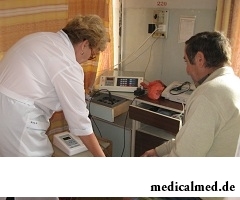 The femur osteochondropathy is also determined by radiological pictures. Five stages of change of a head of a femur are allocated.
The femur osteochondropathy is also determined by radiological pictures. Five stages of change of a head of a femur are allocated.
The osteochondropathy of tuberosity of a tibial bone is established on a clinical picture and is specified after X-ray inspection.
Treatment of an osteochondropathy
Therapy of an osteochondropathy of a calcaneus consists in purpose of non-steroidal anti-inflammatory drugs (if exasperate severe pains), physiotherapeutic procedures, in reduction of exercise stresses. For removal of load of a calcaneus use special insoles instep supports.
Osteochondropathy of a backbone swimmings, an underwater pulling, physiotherapy exercises treat by means of massage. In some cases at strong disturbance of a bearing appoint operation.
Treatment of an osteochondropathy of a femur can be operational and conservative. Various osteoplastic operations are appointed depending on a disease stage. Conservative treatment of an osteochondropathy consists in observance of a bed rest (the patient cannot sit), performing foot massage, physiotherapeutic procedures. Practice a skeletal pulling for both hips.
For treatment of an osteochondropathy of tuberosity of a tibial bone appoint physiotherapeutic procedures, heat. If severe pain, apply a plaster bandage. Sometimes resort to operation – delete a tuberosity fragment. Loads of a chetyrekhglavy femoral muscle are excluded.
Prevention of a disease
For prevention of an osteochondropathy of a calcaneus recommend to wear free shoes.
Prevention of an osteochondropathy of a backbone consists in occupations physiotherapy exercises for creation of a muscular corset. The strengthened exercise stresses need to be limited. Carrying a corset at this disease is inefficient.
As good prevention of an osteochondropathy of a femur serves massage, swimming.
For the warning of an osteochondropathy of a hillock of a tibial bone to athletes during the trainings recommend to sew in a form porolonovy pillows the 2-4th thickness.
There are very curious medical syndromes, for example, persuasive swallowing objects. In a stomach of one patient suffering from this mania 2500 foreign objects were revealed.

All diseases from nerves – in this joke a big element of truth, are said by doctors. Constant stresses lead body to decrease in protective forces...
Section: Articles about health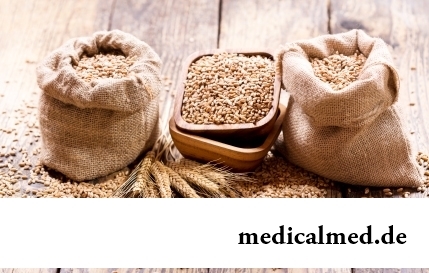
The concept "gluten" (differently, a gluten) combines group of the proteins which are a part of rye, barley and wheat. For most of people the use of the food stuffs containing a gluten not only is safe, but also it is very useful. Nevertheless, there is a number the myth...
Section: Articles about health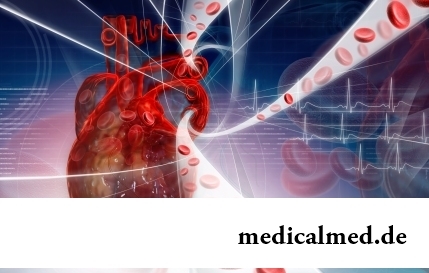
The state of health of the person in many respects depends on chemical composition of biological liquids of an organism. Specialists consider that PH value of these solutions has to be in range of 7,35-7, 45. The deviation in the smaller party (so-called "acidulation") is fraught with development of many heavy illnesses, failures in work of immune system, decrease in working capacity and deterioration of life. To avoid serious fluctuations of acidity of internal liquids it is necessary to adhere разумног...
Section: Articles about health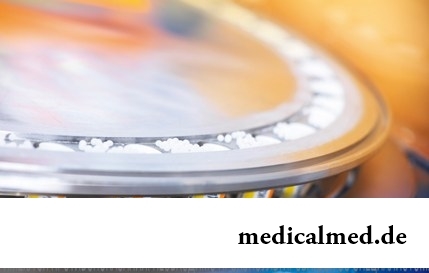
For the help to doctors in the choice of optimal solutions for treatment of various diseases the Cochrane scientific organization (Cochrane) will see off совм...
Section: Articles about health
Practically each person is familiar with the annoying, pulling, unscrewing pains caused by overcooling of muscles of a back. In certain cases inflammatory process is not limited to discomfort, being followed by emergence of hypostasis, consolidations, increase температ...
Section: Articles about health
Climax - process of fading of reproductive function of an organism in process of its aging. At women the main sign of its approach is the termination of a menstrual cycle. Officially the menopause is diagnosed when periods are not observed within 12 months. Age changes quite often are followed by emotional failures, disturbance of thermal control and sweating, dizzinesses and headaches, tachycardia and other unpleasant phenomena. This complex of symptoms...
Section: Articles about health
Residents of big cities quite often have a disease which is known as the syndrome of chronic fatigue (SCF) today. This illness...
Section: Articles about health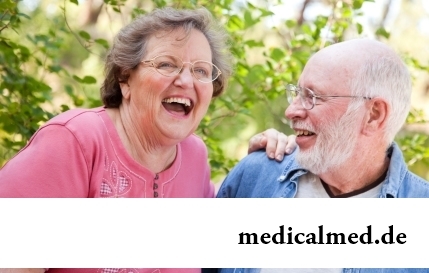
Life expectancy in various regions of Earth is not identical. Social stability, economic wellbeing, availability and level of medical care, household comfort, literacy of the population in the field of observance sanitary гигиен exert impact on it...
Section: Articles about health
It is pleasant to state a possibility of improvement of quality of life of people with problems of functioning of secretory system. Efforts of talented inventors created products which will be able to provide normal life activity of clients with moderate degree of a disease, it is essential to facilitate the help to patients with strongly expressed disturbances....
Section: Articles about health
The cosmetics intended for improvement of a condition of skin, nails and hair are used by each woman. Expenses on регуля...
Section: Articles about health
Phobia – the persuasive fear of a certain contents shown in a specific situation against the will of the person. Concepts of a phobia and fear are similar, however if the fear is natural protective function of mentality, then the phobia is its deviation. So the person can an ispytyva...
Section: Articles about health
Each person has easy indispositions which he transfers "standing", trying not to ask for medical care. Arguments at the same time are adduced same: "it is a trifle, itself will pass", "I have too many important issues", "there are no wish to spend time for doctors", etc. At good shape of health, normal working capacity and lack of suspiciousness dislike for complaints to such problems is quite natural. It is not the most correct, but very widespread type of behavior. I am glad...
Section: Articles about health
The main role in development of a peptic ulcer of a stomach and duodenum the bacterium Helikobakter plays pilor. Activity and Wuxi...
Section: Articles about health
What woman does not dream of a beautiful and thick hair? While physicians developed difficult schemes on hair transplant, in the industry of hairdresser's art a few years ago there was a sensation – methods of hair extension appeared. It would seem, dreams came true...
Section: Articles about health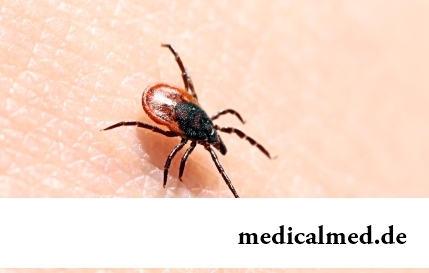
Tick-borne encephalitis – one of the most dangerous viral diseases which causative agents transfer and is given to people by ixodic mites. These are the small blood-sicking insects living in the considerable territory of our country. The person bitten by a tick can catch also erlikhiozy, bartonnelezy, babeziozy, mycoplasmosis and Lyme's disease. As well as encephalitis, these illnesses affect the central nervous system, and as specific antiviral therapy does not exist, the forecast very to a neuta...
Section: Articles about health
Condition of lips (their morbidity, outward) – one of indicators of health of the person. Peeling, dryness, pallor, and also трещ...
Section: Articles about health
Quite large number of people adheres to the principles of vegetarian food. But how to be if in a family of vegetarians there are children? Whether it is possible to eat also it the same as to parents, or after all the children's organism is not adapted for the use only раст...
Section: Articles about health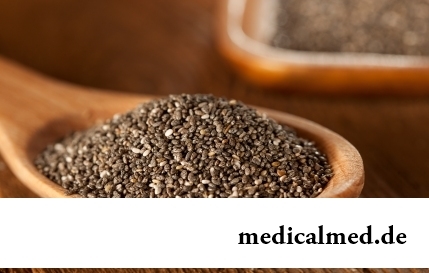
The chia plant, or the Spanish sage, is from South America. The indigenous people of the continent since ancient times used its seeds in food: small, but very nutritious kernels, in a form the reminding fasolina. Indians knew about useful properties of seeds of a chia, and applied them to maintenance of vitality and increase in endurance before serious exercise stresses....
Section: Articles about health
The problem of diagnosis was and remains to one of the most important in medicine. From that, the reason недо will be how precisely defined...
Section: Articles about health
Many of us, probably, noticed more than once that from intellectual loadings at some point the brain as though "overheats" and "assimilation" of information is strongly slowed down. Especially this problem urgent for persons of age becomes more senior than fifty years. "It is already bad with...
Section: Articles about health
The advantage of swimming for the person is so high that this sport is not only the most popular, but also is widely applied in medicine and rehabilitation processes. If you look for for yourself the occupation allowing pleasantly and to spend time, then swimming with advantage – the fact that it is necessary for you. And give learns several facts about swimming....
Section: Slideshow
A little more than a century ago goat milk was a traditional food stuff of most of Russians. Unfortunately, today on tables...
Section: Articles about health
The kid who was recently born is surrounded with love of adult family members and their cares without which the baby cannot exist. Some parents consider that gentle attachment and caress are quite enough that the child correctly developed and was happy...
Section: Articles about health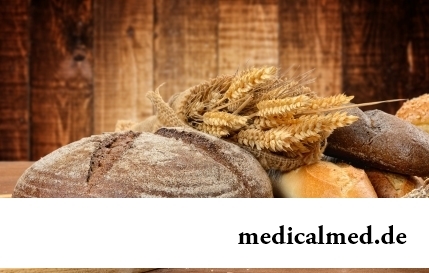
There is an opinion that at low temperatures safety of products is ensured longer and better thanks to what the refrigerator is considered the most suitable place for storage of food. In most cases it is fair, however there is a number of products for which low temperatures – the main reason of their premature damage. Storage in the refrigerator leads to their bystry rotting, emergence of a mold, is followed by loss of vitamins and tastes. What products it is better to remove...
Section: Articles about health
Smoking not only exerts a negative impact on the state of health of the consumer of tobacco products, but is a source з...
Section: Articles about health
The pine is one of the most widespread plants of our woods. Its needles and pitch not without reason called by "gallipot" were since ancient times used for strengthening of protective forces of an organism, treatment of avitaminosis, anemia and many other diseases. In recent years wide п...
Section: Articles about health
One of the major chemical processes happening in a human body are oxidation reactions. They go with participation of fats and carbohydrates which we receive from food, and the oxygen getting to us from air. A main goal of such reactions is obtaining the energy necessary for life activity. Unfortunately, as a result of these processes dangerous by-products – so-called free radicals are allocated. To minimize harm which they can cause to the person neo...
Section: Articles about health
